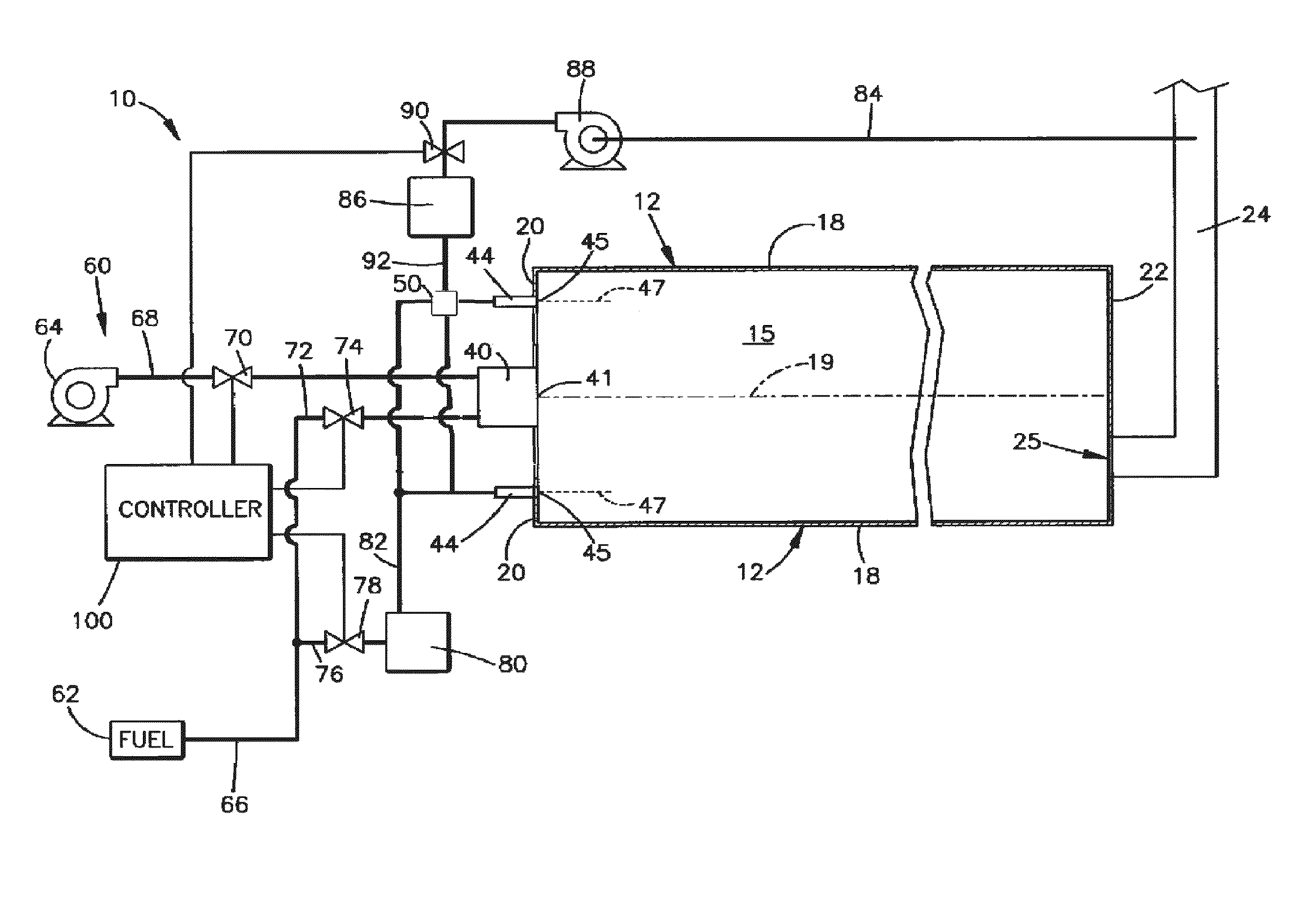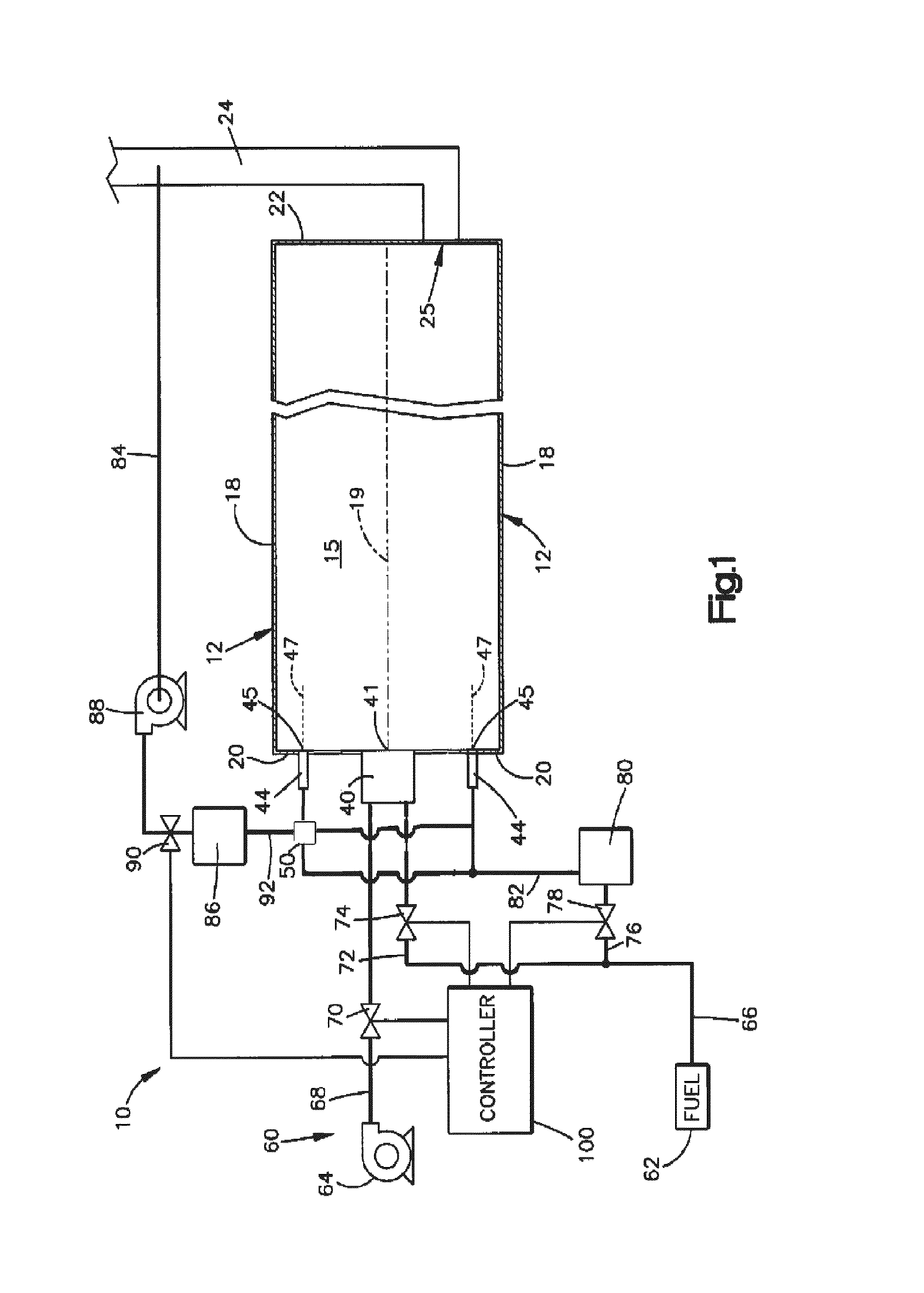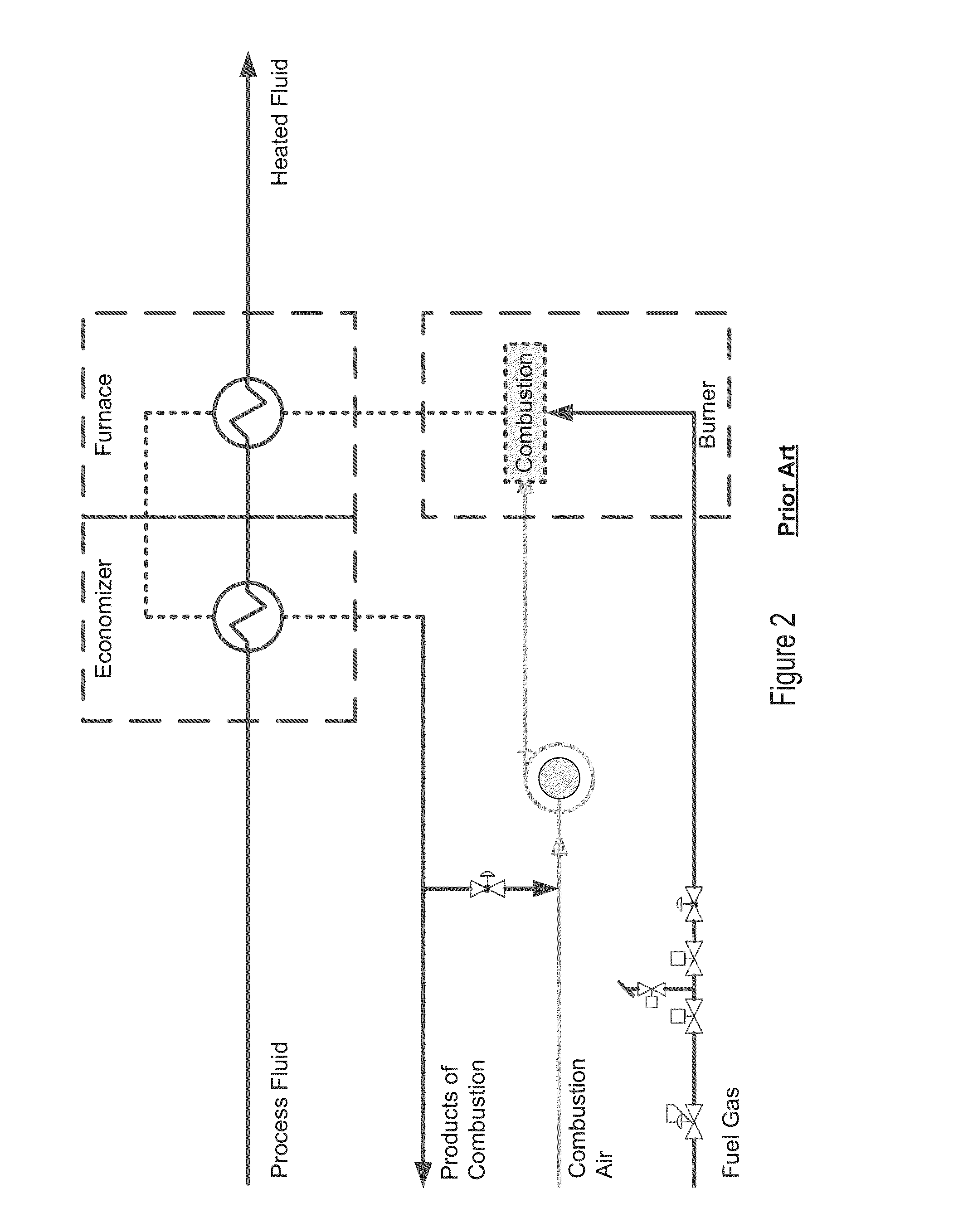LOW NOx COMBUSTION METHOD AND APPARATUS
a combustion method and low nox technology, applied in the field of heating systems, can solve the problems of reducing nox emission levels, reducing burning rates, and reducing flame temperatures, and achieve the effect of reducing nox emission and reducing nox emission
- Summary
- Abstract
- Description
- Claims
- Application Information
AI Technical Summary
Benefits of technology
Problems solved by technology
Method used
Image
Examples
example
[0037]The following illustrative example is intended to be non-limiting. In this example, existing secondary gas inlets to a gas-fired combustion unit to provide low-quality, high pressure wet steam for an enhanced oil recovery operation were replaced with a premixed inlet of recycled flue gas and natural gas, with the total fuel input remains the same. The flue gas was removed directly from the stack and perfectly mixed with the fuel stream before it was introduced into the secondary combustion zone of the burner through a simple open pipe. The lean primary combustion zone remains unchanged.
[0038]Experimental data were collected from the steam generator, including ambient air flow rate, temperature, and fuel flow rate, temperature, and flue gas composition. Data collection was also made in the furnace radiant section at longitudinal locations with radial measurements taken from the furnace wall to the center of the steam generator. At each location, extractive sampling was utilized...
PUM
 Login to View More
Login to View More Abstract
Description
Claims
Application Information
 Login to View More
Login to View More - R&D
- Intellectual Property
- Life Sciences
- Materials
- Tech Scout
- Unparalleled Data Quality
- Higher Quality Content
- 60% Fewer Hallucinations
Browse by: Latest US Patents, China's latest patents, Technical Efficacy Thesaurus, Application Domain, Technology Topic, Popular Technical Reports.
© 2025 PatSnap. All rights reserved.Legal|Privacy policy|Modern Slavery Act Transparency Statement|Sitemap|About US| Contact US: help@patsnap.com



